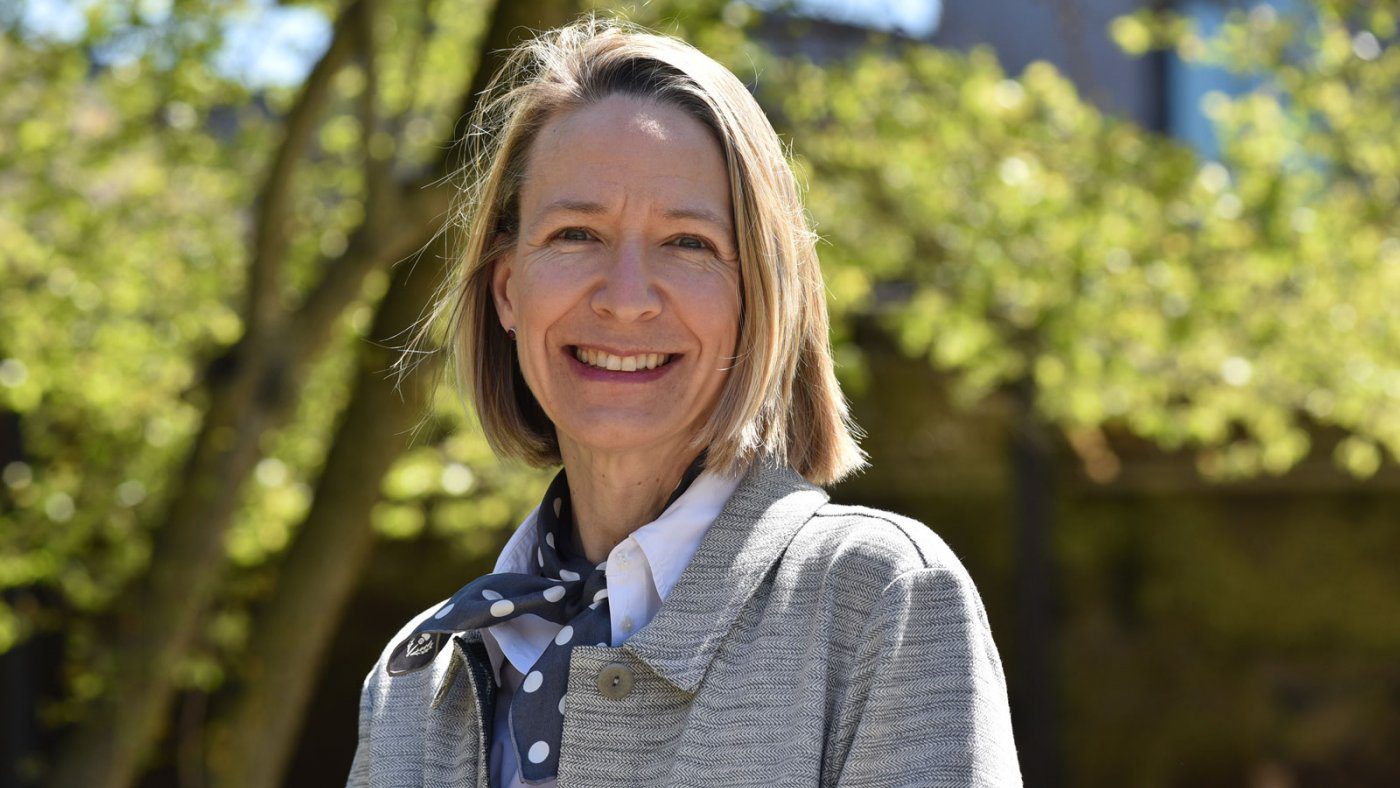This story was updated in January 2022 to reflect Larsen’s service as chair of the urban and regional planning program.
Larissa Larsen’s research was in large part shaped by her move to Phoenix, Arizona, in 1999. The native Canadian completed her Ph.D. at the University of Illinois at Urbana-Champaign, then worked in Chicago as a planner and landscape architect before heading west to teach. “I never again took water for granted,” she says. “And I realized the impact that increasing temperatures were going to have on many communities because I started to experience these extremes.”
Larsen is chair of the urban and regional planning program at Taubman College and an associate professor of urban and regional planning. She has previously served as director of the urban and regional planning doctoral program. Her research focuses on identifying urban environmental problems caused by such factors as extreme heat, water pollution, and stormwater flooding. Recently, she’s been focused on testing different types of infrastructure solutions in an effort to lessen the impacts from future events.
Larsen faced a skeptical audience when she started sounding the alarm on climate change and particularly the issue of extreme heat in 2000. “People thought I was a lunatic,” she says. But now she says it’s a watershed moment; there’s a recognition that extreme heat and flooding are the main climate change impacts in the Midwest: “They aren’t jokes anymore.”
In 2006, she co-authored an article that was the first to document that lower income and communities of color were disproportionately impacted by the urban heat island. It was cited more than 800 times and was “pretty powerful,” she says. Now, she’s pleased that when she attends planning conferences, she sees so many people working on the issue. “It’s good to see that it’s recognized as an issue of concern in cities,” Larsen says. “Elevating these environmental problems is something I’m really proud of.”
Before COVID, Larsen spent a month each year in East Africa. She began her work partnering with Dr. Kumelachew Yeshitela at Addis Ababa University in Ethiopia in 2014. The first project involved collaborating with graduate students at the university to digitize the city. Results indicated that urbanization was happening at “an extraordinary pace,” she says. This demonstrated the way that a major housing development (more than 1 million units all over the city when completed) helped reshape a city, “with an eye towards thinking about how to maintain or increase density and provide services.” She explains that in many African cities, low density development is occurring, and the poorest people live on the fringes, far from the city center. The urban pattern “is really complicating life for everyday people.”
Now, Larsen is embarking on similar work in other African communities. “We used to think that maybe we couldn’t learn very much from places that had fewer resources. I think that’s quite the opposite. Places that have few resources often are extraordinarily creative in how they respond to problems,” she notes.
Larsen says the University of Michigan’s fostering of interdisciplinary approaches plays to a strength of her work: she takes time to carefully evaluate efforts to address environmental problems — often with colleagues in other disciplines. “I include a lot of natural science and public health kinds of measures in my approach to planning,” she says. Recently, she has been collaborating with Marie O’Neill in the School of Public Health around heat vulnerability assessments. O’Neill brings an epidemiological perspective to identifying sensitive residents, like the elderly and people with mobility issues, while Larsen examines the impact of the building envelope and neighborhood conditions on indoor temperatures. She says that students are excited about the chance to look at problems instead of disciplines, “and so then, we’re off to the races.”
As a member of U-M President Mark Schlissel’s Commission on Carbon Neutrality, Larsen spent nearly two years working to develop recommendations on how to achieve the university’s goal of carbon neutrality. She says the biggest challenge lies in curbing emissions that come from university purchases, as well as commuting. She and the other members learned that staff tend to have longer commutes due to high housing costs that push them farther out from the city. One recommendation is to have parking fees dependent on salary. “So if the faculty pay more for parking, and they probably are more likely to live in in Ann Arbor, we hope that that encourages some change in behavior.”
She’s currently working on a project with The Lincoln Institute of Land Policy, leading a team that will develop a conceptual framework to link issues of social equity, public health, and land planning and policy. The Lincoln Institute has been collecting many case studies around different initiatives to promote equitable cities, “thinking more complexly about how planning works in place and space.”
Though her professional work is gratifying, Larsen is especially fulfilled by teaching. “I really feed off their enthusiasm and excitement for change,” she says of her students. “It helps me realize so much goodness is yet to come, despite some concerns about where we’re going.”
—Julie Halpert





